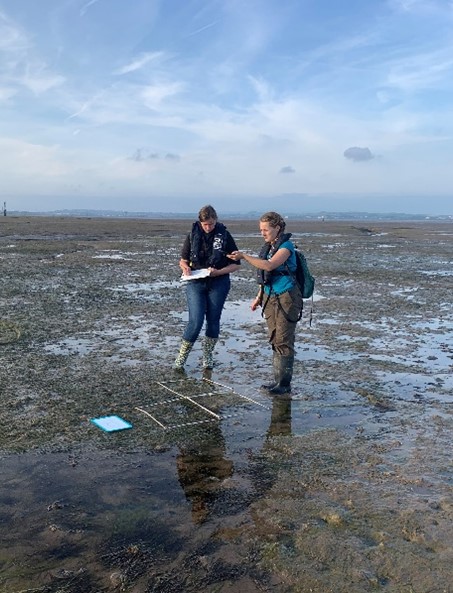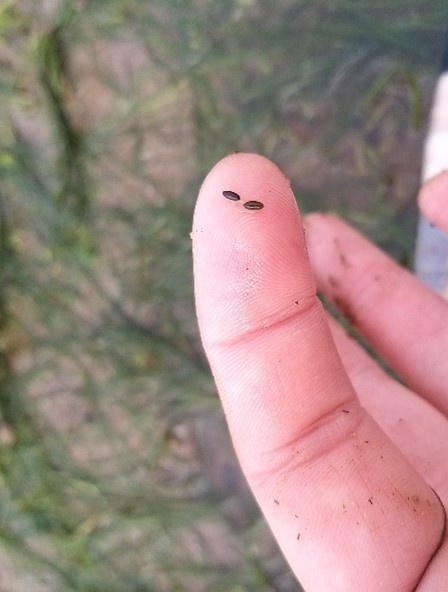As the only flowering plant that lives fully submerged in water, seagrass provides a unique and rich habitat. Seagrass beds are hugely important for blue carbon storage, coastal protection and biodiversity enhancement, they also provide habitat for juvenile fish and shellfish and foraging grounds for wildfowl and waders. In the North West, it is reported that seagrass historically covered 224ha, likely occurring around Barrow-in-Furness pre-1998. Recent surveys show that approximately 70ha of seagrass remains, representing a 70% loss.
With thanks to funding from Ozone and the Environment Agency, Cumbria Wildlife Trust will be restoring the seagrass beds within the Walney Channel to bring them back to be closer to their former extent. However, whilst this is a delivery project, restoration is still in its infancy and trialling of the best techniques at a particular location is necessary.
We are in stage one of the project which is providing the most up to date survey of the extent and condition of the 89 ha of seagrass beds in the Walney channel Additionally we are assessing the baseline ecosystem services provided by the seagrass beds such as carbon storage and biodiversity enhancement to allow us to monitor the impact of any restoration. This is being done in collaboration with a number of local universities, including Lancaster University, University of Cumbria, Manchester Metropolitan University and Swansea University.
Thanks to funding from Ozone, we are in the process of setting up a seed storage facility to store and ‘rot out’ seagrass seed after collection. We’ve purchased all the necessary equipment and will be installing it and setting it up at South Walney nature reserve. Alongside this we are training up a number of Marine Champions as citizen scientists to help monitor and protect the seagrass beds and wider marine environment. In August and early September 2024, with the help of volunteers and our Marine Champions we will collect seed from one of the healthier sites and undertake a number of different trials. At present, little is known about Z. noltii restoration and there has been no attempt at seagrass restoration in the North West. We will trial a number of different techniques to understand the most effective method of restoring Z. noltii beds in the area. Both seed and seedling planting have been trialled elsewhere around the UK for Z. marina with varying levels of success with each method. Packing seeds or seedlings into biodegradable hessian bags and planting these on the seabed can increase the germination and survival of seagrass plants. We will monitor the success of our trials and will then upscale our restoration efforts in order to restore the seagrass beds back to their former extent to increase carbon storage and sequestration and increase biodiversity in the Walney Channel, alongside wider natural capital benefits.
We can’t wait to hear how this exciting project develops and look forward to seeing seagrass return to Morecambe Bay, the “home” of Ozone!
For further information, please see: https://www.livingseasnw.org.uk/seagrass-restoration

